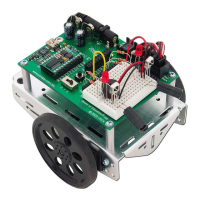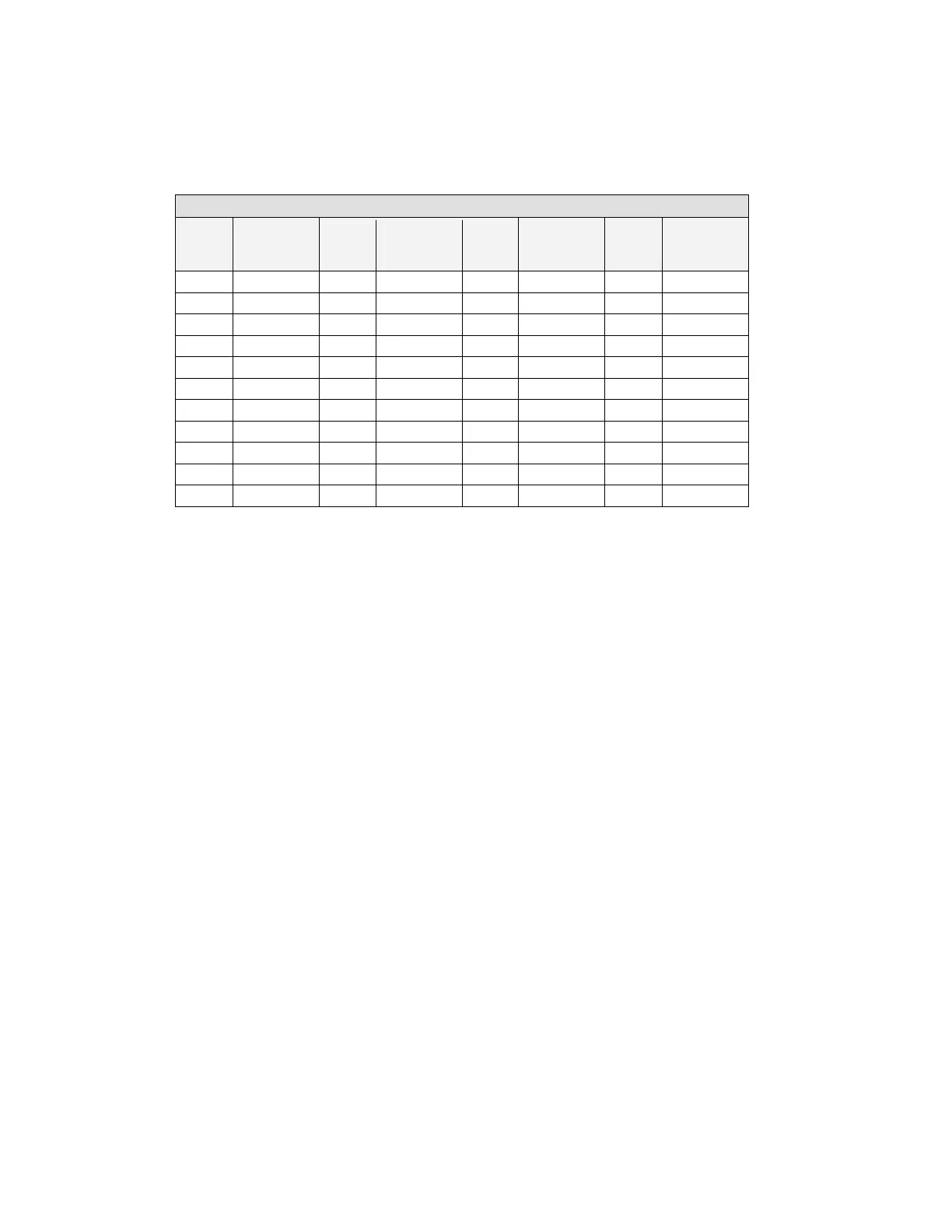Page 116 · Robotics with the Boe-Bot
You can use Table 3-1 to record the data for your own transfer curve. Keep in mind that
the example program is controlling the right wheel with the values you enter. The left
wheel turns in the opposite direction.
Table 3-1: Pulse Width and RPM for Parallax Servo
Pulse
Width
(ms)
Rotational
Velocity
(RPM)
Pulse
Width
(ms)
Rotational
Velocity
(RPM)
Pulse
Width
(ms)
Rotational
Velocity
(RPM)
Pulse
Width
(ms)
Rotational
Velocity
(RPM)
1.300 1.400 1.500 1.600
1.310 1.410 1.510 1.610
1.320 1.420 1.520 1.620
1.330 1.430 1.530 1.630
1.340 1.440 1.540 1.640
1.350 1.450 1.550 1.650
1.360 1.460 1.560 1.660
1.370 1.470 1.570 1.670
1.380 1.480 1.580 1.680
1.390 1.490 1.590 1.690
1.700
Remember that the
PULSOUT command’s Duration argument is in 2 µs units. PULSOUT
12, 650
sends pulses that last 1.3 ms to P12. PULSOUT 12, 655 sends pulses of 1.31
ms,
PULSOUT 12, 660 sends pulses of 1.32 ms, and so on.
sm3.1
s0013.0
s000002.0650
s2650Duration
=
=
×=
×=
sm31.1
s00131.0
s000002.0655
s2655Duration
=
=
×=
×=
sm32.1
s00132.0
s000002.0660
s2660Duration
=
=
×=
×=
√ Mark your right wheel so that you have a reference point to count the
revolutions.
√ Run TestServoSpeed.bs2.
√ Click the Debug Terminal’s Transmit windowpane.
√ Enter the value 650.
√ Count how many turns the wheel made.

